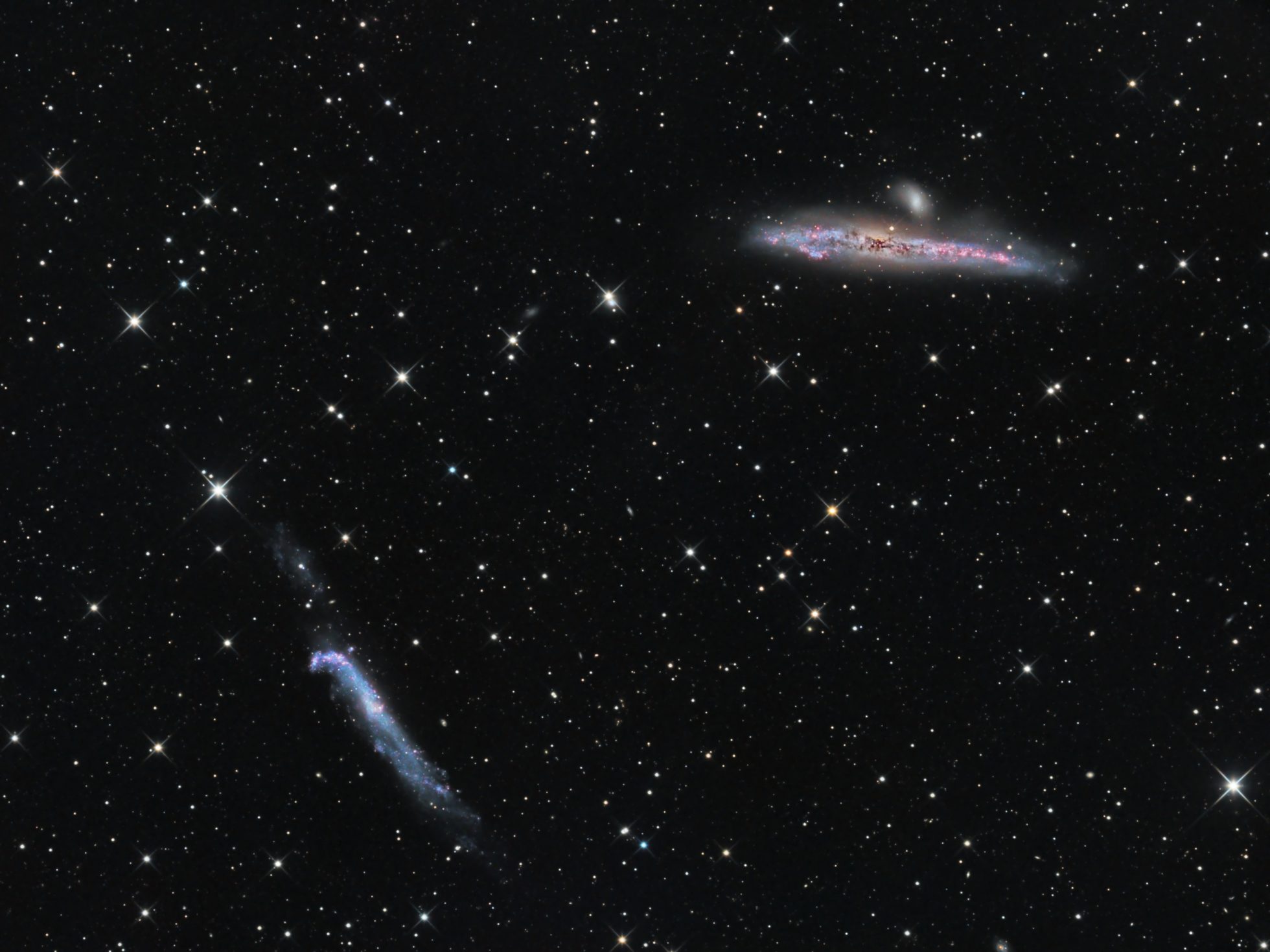With its asymmetric appearance, the edge-on spiral galaxy NGC 4631 resembles a whale swimming through space. NGC 4656, the hockey-stick or tadpole galaxy, lies nearby. In the distant past, the orbiting duet made a close pass. In the process, the Whale galaxy distorted its counterpart, drawing from it a long tidal stream visible in the photo.
These galaxies are seeing intense star formation seen as pink knots in the picture due to these interactions. These regions are Hydrogen-Alpha emission rich regions where new stars are being born.
The long tidal streamer extending out of the Tadpole galaxy is very faint, but with dark skies and long exposures, we could capture it quite well.
Imaging Notes:
This is our longest exposure image to date (20 hrs of data collected from a semi-dark location)
| Catalogue Name | Whale (NGC 4631), NGC 4627, Tadpole (NGC 4656) |
| Constellation | Canes Venatici |
| Distance (Light Years) | ~25 Million Light Years |
| Photographic Information | |
| Exposure | HaLRGB – Total exposure 20hours |
| Equipment | F3.8 AGO 10” Imaging Newt, QSI 683wsg, Paramount MyT, SSAG Auto-guider |
| Processing | Pixinsight, Adobe PS |
| Imaging Location | 2018 – Lake San Antonio and Santa Clara, CA |

